In Photos: Travel Australia's Great Ocean Road
Great Ocean Road
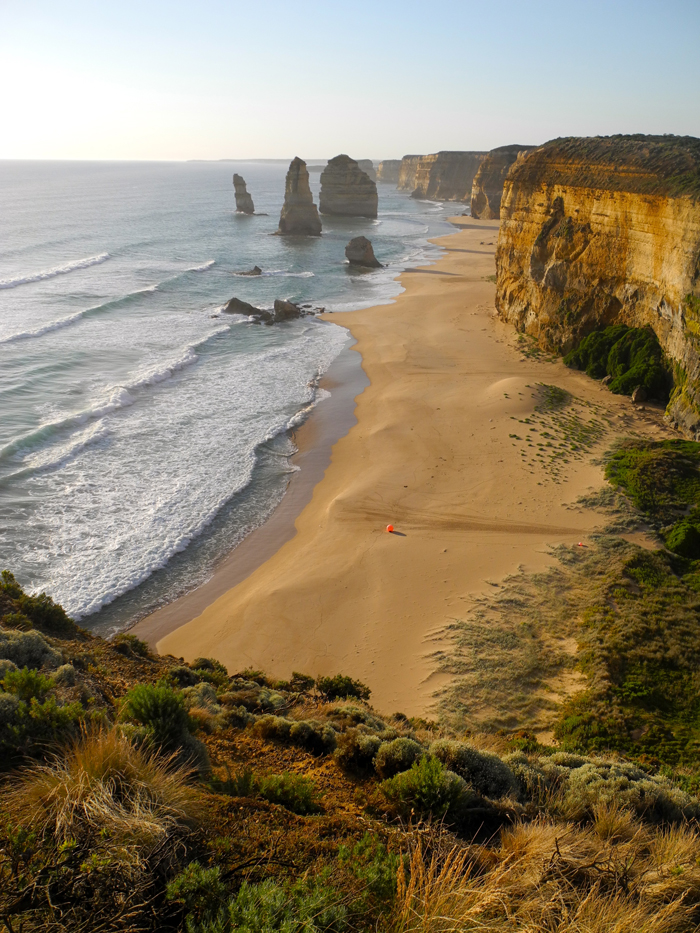
Australia is the largest island on Earth and the oldest continent. It is a place isolated for hundreds of thousands of years. It is a land apart biologically, full of egg laying mammals, bipedal marsupials and dazzlingly beautiful birds.
At the end of this land "down under," the sea does battle with the land. Wind and waves travel uninterrupted for thousands of miles before slamming into the coastline. Sculpted by the elements, this interface between land and sea offers narcotic seascapes, dramatic geology and primeval forests where koalas lounge and colorful parrots shriek.
The aptly named Great Ocean Road hugs the southeastern edge of Australia for over 151 miles (243 kilometers). This Australian National Heritage Road offers an ideal way to explore the wonders of this beguiling coastline and serves as a gateway to its natural attractions.
Surf Birds
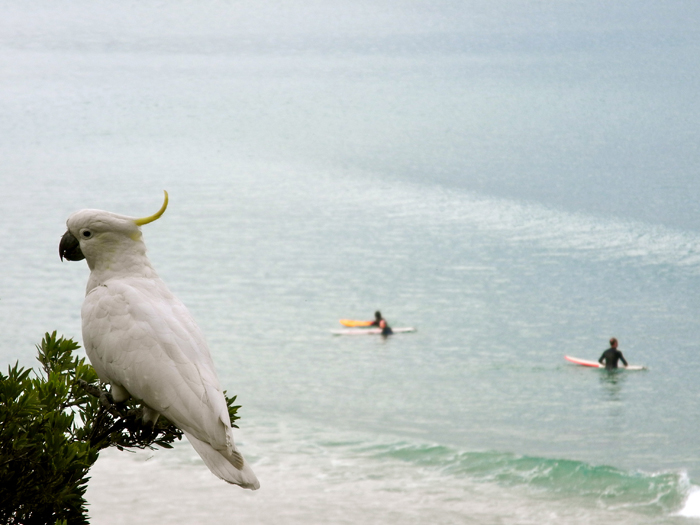
The Great Ocean Road is not only one of the world's most iconic coast roads but also the world's largest war memorial, built by returned soldiers between 1919 and 1932 and dedicated in turn to soldiers killed during World War I.
The towns of Lorne and Torquay lie near the beginning of the Great Ocean Road and are popular stopovers for holidaymakers, beach bums and surfers. The surf and beach culture along this so-called "Surf Coast" have had a huge role in shaping Australian surf culture and many of the world's most famous surf companies have their origins here, including Quicksilver and Ripcurl.
In the leafy hills over the bay of Lorne, Sulphur-crested cockatoos (Cacatua galerita) shriek through the tall boughs of eucalyptus trees like winged dinosaurs. These large white parrots are beautiful and inquisitive, often letting visitors get very close (just please don't feed them!).
Fern Gullies and waterfalls
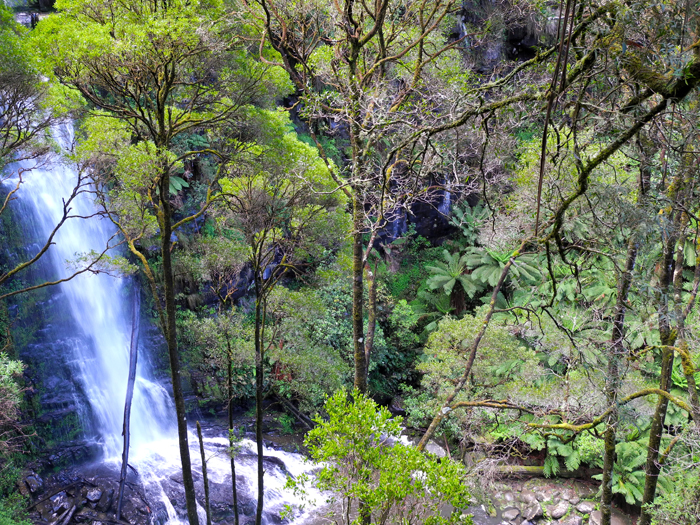
Towering eucalyptus forests reach towards the sky. Giant tree ferns droop ponderously. Rushing streams and numerous waterfalls tumble down to the sea.
The low ranges just inland of the Great Ocean Road are called the Otway Ranges. These rolling green hills trap cool, moisture-laden air from the Southern Ocean. Stepping away from the booming sound of the coast to venture inland, the lush forests here are still and silent.
More than 40 square miles (103 square kilometers) of this forested hinterland are protected as Great Otway National Park. Within the park a diverse range of landscapes and vegetation types support a rich variety of plants and animals, including the rare and elusive Spotted Quoll, mainland Australia's largest marsupial carnivore.
Koalas
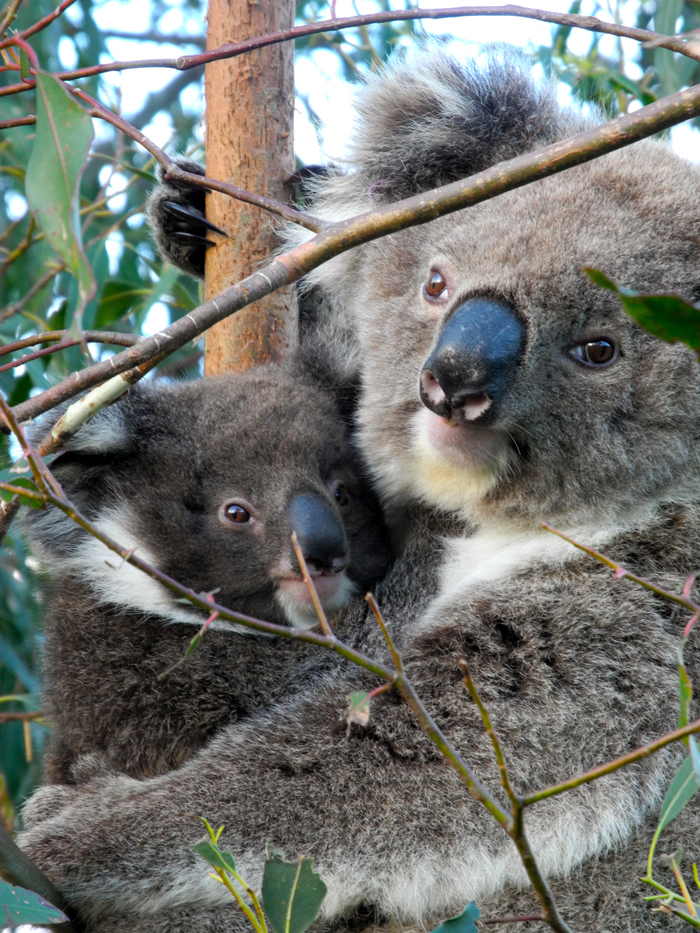
Loud bellows echo through the night air very close. You start up in your tent convinced there is an angry bear outside, before realizing, "This is Australia. There are no bears here." At least not real ones. What your hearing is a koala, sometimes affectionately called a "koala bear."
Koalas (Phascolarctos cinereus) have no relation to bears at all. Rather, they are tree-dwelling marsupials and their closest relatives are wombats. Along with kangaroos they are amongst the most iconic of Australian marsupials, mammals whose young develop in a pouch.
Koalas feed exclusively on the leaves of eucalyptus tree species found throughout eastern Australia. They may sleep up to 19 hours, only feeding a few hours a day. During the mating season males become very vocal, bellowing from the treetops like grunting pigs. Scientists think males have such a loud bellow for an animal their size so that they can "boast" in the hopes of attracting females. A love serenade, if you will, koala-style.
Forest primeval
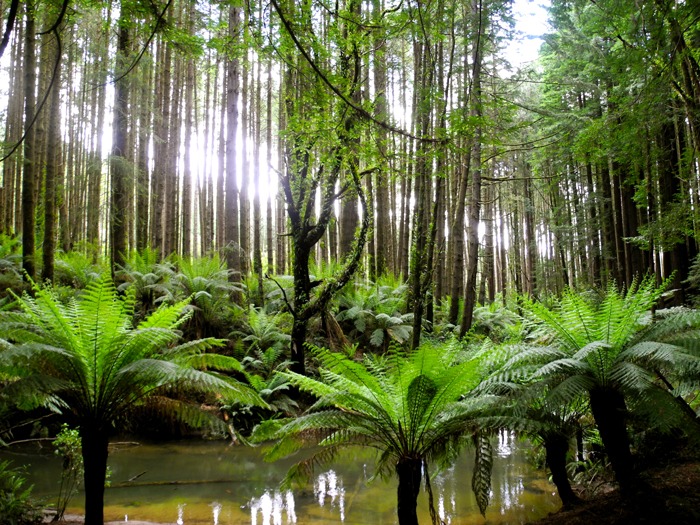
Lush greens — including mosses, liverworts and ferns — bloom from every surface. Raindrops pucker on the forest floor while bird calls echo through expectant silences. Though it is raining I can barely feel a drop under this high cathedral of forest giants.
The cool mountains and valleys of the Otway Ranges are dominated by wet forest ecosystems nurtured by abundant rainfall. These forests have some of Victoria state's, and the world's, tallest trees, including the Mountain Ash, which can reach more than 330 feet (100 meters) in height, making it the world's largest flowering plant.
After about 150 years trees in wet forests begin to develop hollows that support a diverse array of animals. Possums, gliders, owls, bats and many birds require these tree hollows for nesting or roosting. If you wait patiently, it is possible to see some of these elusive forest dwellers. With luck you may even spot the small and elusive platypus along still rivers and forest pools just like this one.
Stranger than fiction
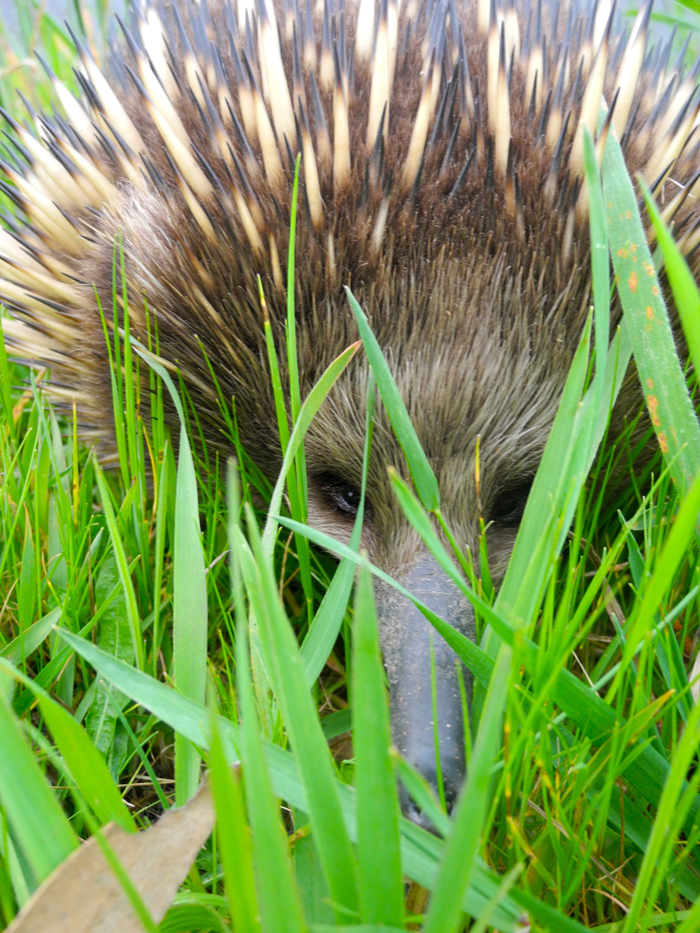
Picture a giant hedgehog with a long nose. A waddling pin cushion with an appetite for ants. An egg-laying mammal with a pouch. The bizarre looking echidna (of the family Tachyglossidae) is a living evolutionary relic.
Echidnas are found only in Australia and New Guinea and are some of the strangest and most fascinating creatures in the animal kingdom. Linking reptiles to mammals, echidnas — along with platypuses — belong to the mammalian order, Monotremata, the egg-laying mammals.
Their strangeness doesn't end there though: Echidnas possess long, toothless mouths, have multiple sets of sex chromosomes, posses a cloaca like birds instead of multiple sex organs and nurse their young without breasts (milk oozes from pores). True evolutionary oddities quite unlike anything else, echidnas seem to come straight out of the pages of a medieval bestiary.
Brilliant design
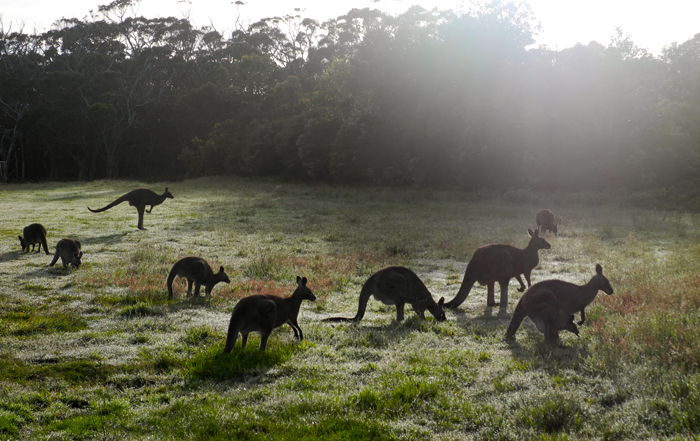
Throughout the night you hear the soft munch of grass, the thump of feet and the grunt of large animals outside your tent. You are too exhausted to investigate and fall back to sleep, as if in a dream.
Opening your tent to the soft light of dawn you finally see what all the commotion was about: Kangaroos! A "mob" of more than two dozen eastern grey kangaroos (Macropus giganteus) forages nearby. Mothers graze with small joeys hanging out of their pouches for a nibble. Youngsters tussle and play fight and a large male, the mob boss, regards you earnestly before losing interest: Back to breakfast.
Symbolic of "the Great South Land," kangaroos are perfectly adapted to their environments. Brilliantly engineered to hop instead of run, kangaroos save energy by using the rebound of each hop to propel them forward with minimal effort. They are able to put their pregnancies on hold in the face of adverse conditions and the unpredictable climate of Australia. And they are highly socia, making them fascinating animals to study and observe, even from your tent.
Sign up for the Live Science daily newsletter now
Get the world’s most fascinating discoveries delivered straight to your inbox.
Shipwreck coast
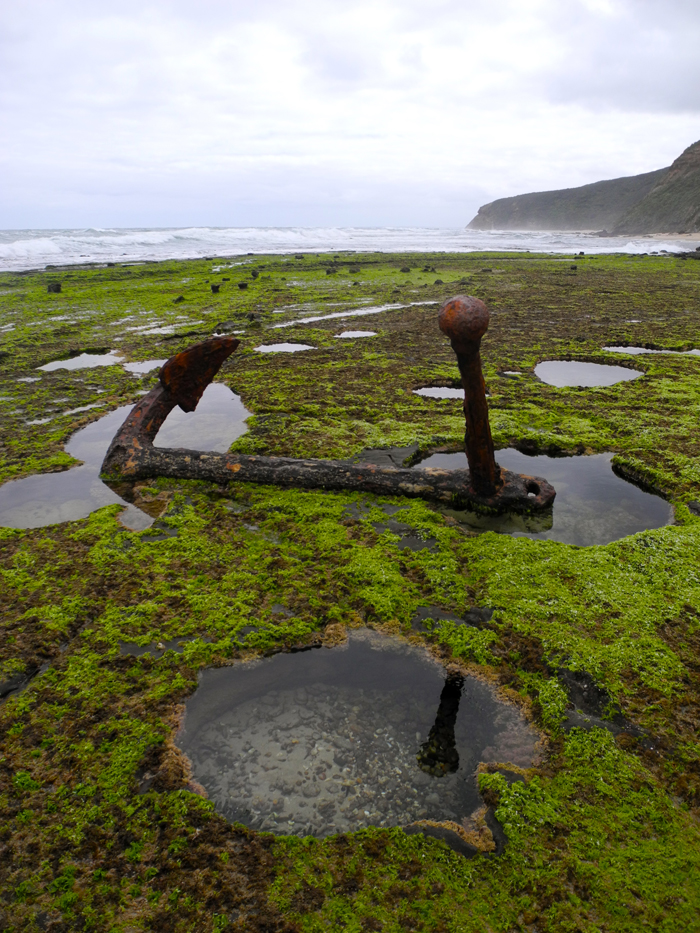
The roar of the sea is almost deafening. Huge waves curl and break on the reef below and the wind moans like a restless spirit. Descending more than 350 steps to reach remote and desolate Wreck Beach is to come face to face with the terrifying power and beauty of the sea.
Much of the middle section of the Great Ocean Road is known as the "Shipwreck Coast." Hundreds of wrecks dot this ragged coastline. They are a testament both to Victoria's early trans-ocean immigration and the dangers of Bass Straight, one of the most treacherous bodies of water in the world.
At low tide it is possible to wander onto the exposed reefs to visit the remains of the ill-fated Marie Gabrielle and the Fiji, passenger ships that ran aground near Wreck Beach in 1878. All that remain today are their anchors, dug in tightly to the reef like monuments to the seafaring past. Pockmarked by innumerable rocky indentations, Wreck Beach is also a wonderful place to explore tide pools.
Micro worlds
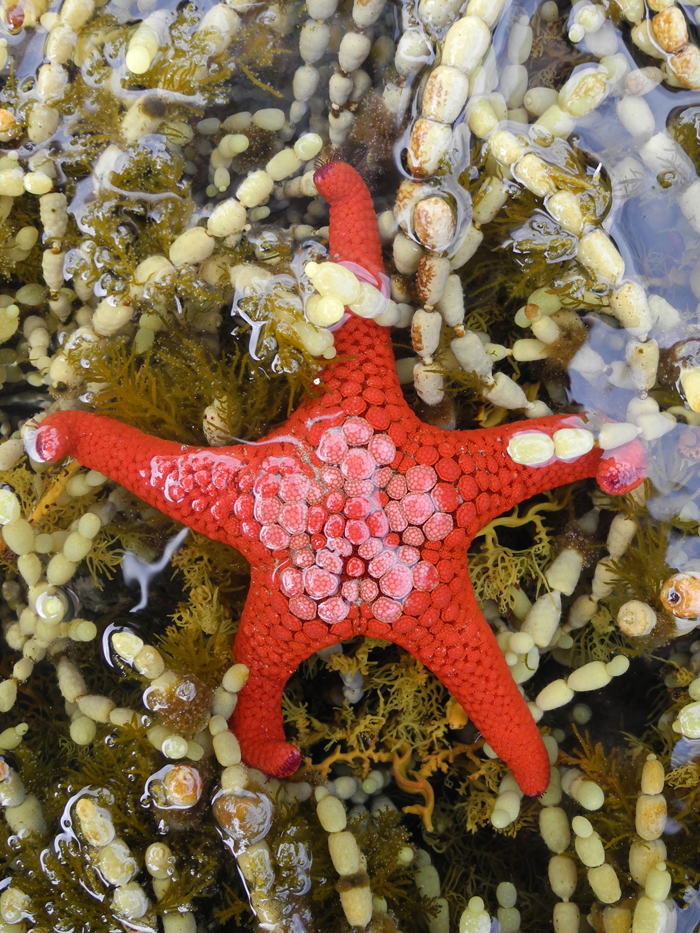
Colorful starfish and anemomes seem to bloom like flowers from silent rock pools. Moon snails and small hermit crabs inch along rocks silently feeding on algae. Small, beautifully patterned fish dart in and out of crevasses and sparkling shells glitter like a thousand diamonds in the sun.
Tide pools are micro-worlds full of life. In the intertidal zone, innumerable small creatures make their home at this interface between land and sea. To live in the intertidal zone creatures must be hardy and adaptable. The constant change of conditions from high water to full exposure to the sun and predators offers unique obstacles for marine life, but also the reward of fresh food with each new tide surge.
Sculpted by the power of the Southern Ocean, boundless opportunities to discover the wonders of these micro-worlds exist along the Great Ocean Road. Ephemeral and fleeting, exploring what the tide brings in is to dabble in the magic of the mysterious sea.
Cape Otway
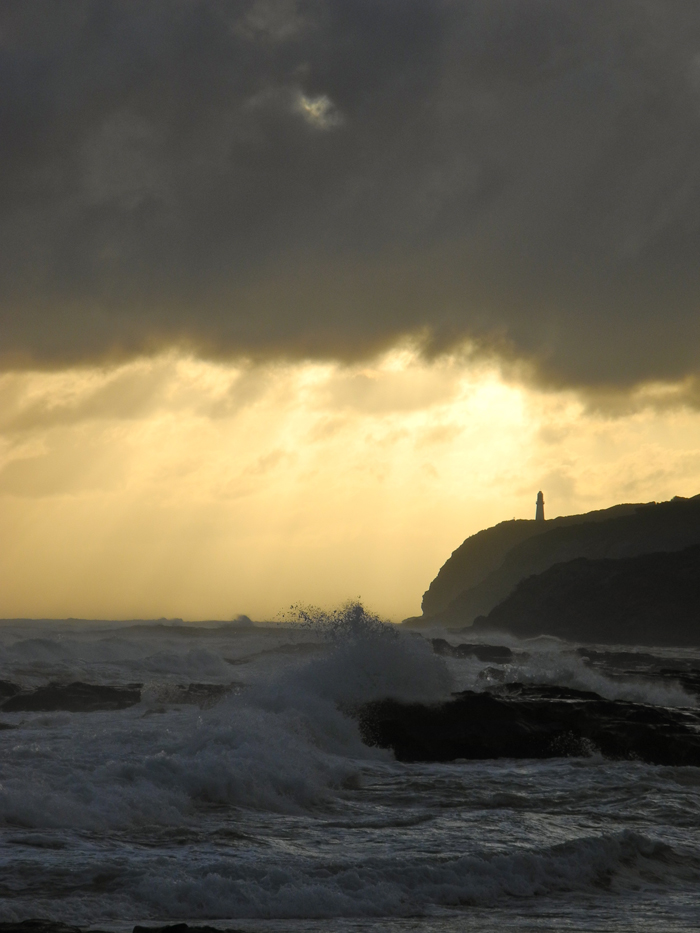
Big seas slam into ragged cliffs and howling winds from across the watery wastes of the Southern Ocean hit me — hard. I'm on Cape Otway, the most southerly point of the coastline for hundreds of miles at roughly the center point of the Great Ocean Road.
The lonely pillar of Cape Otway lighthouse stands sentinel over the rough seas where the Southern Ocean meets with Bass Straight. Erected in 1848, Cape Otway lighthouse is the oldest and most significant lighthouse in the whole of Australia. Today,the passenger ships of old no longer navigate past the cape but it is not uncommon to see the tiny white shapes of local crayfish and abalone boats dwarfed by the endless sky and roiling seas below.
Australia is so vast, it would take a lifetime to see it all. The best way to wrap your head around this incredible land and let it sink into your bones is to pace yourself. One winding road, one beckoning shadow, one epic sunset at a time.










